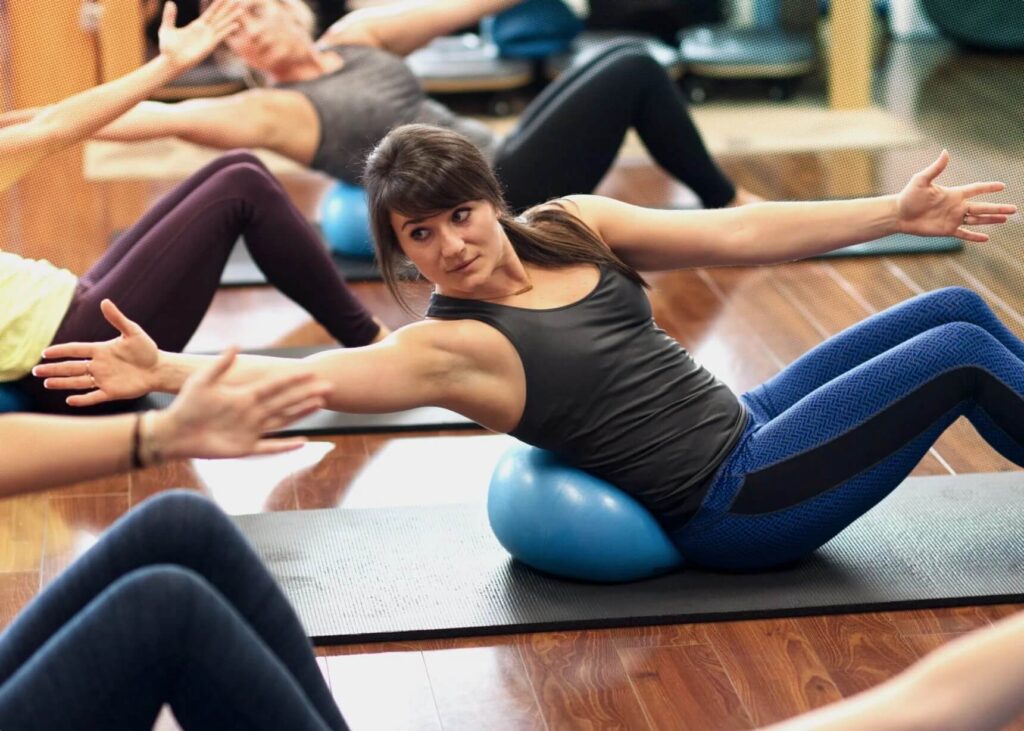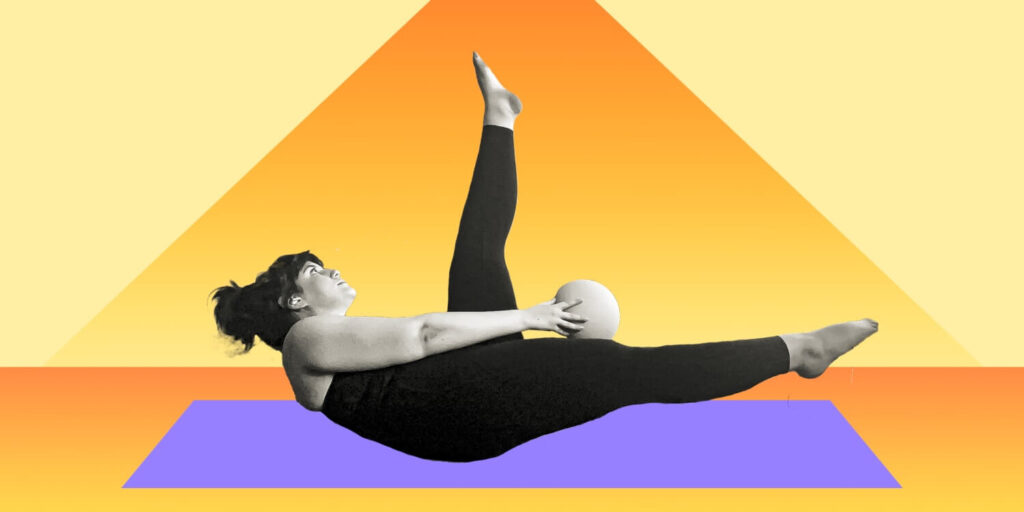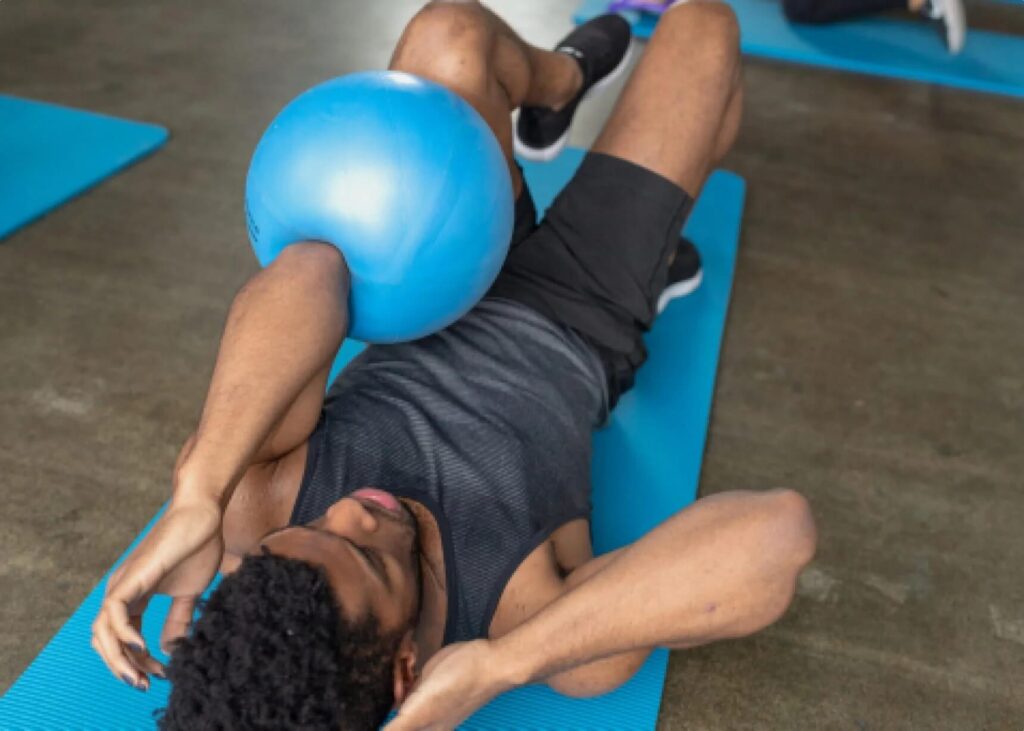The Pilates soft ball is a versatile tool that has gained popularity among yoga and Pilates enthusiasts. Its unique design enhances various aspects of fitness, particularly balance and posture. In this article, we will explore the features and benefits of the Pilates soft ball and offer insights into how it can be seamlessly incorporated into your exercise routine.
Understanding the Pilates Soft Ball
The Pilates soft ball is a small, inflatable accessory often used in Pilates classes and workouts. Typically ranging between 25 to 30 centimetres in diameter, it is lightweight and designed to be squeezed or held during exercises. This simple yet effective tool can significantly impact bodily awareness and control.
The design and features of a Pilates soft ball
Made of durable, non-toxic materials, the Pilates soft ball is intended to withstand regular use. Its soft, pliable exterior allows it to adapt to various movements, providing comfort while exercising. A distinct feature of the Pilates soft ball is its ability to facilitate both stability and instability, depending on how it is used. The ball can be inflated or deflated slightly to adjust its firmness, making it versatile for different skill levels.
The ball also comes in a variety of colours, adding an element of fun to your workout. The small size makes it easy to transport, allowing you to practice at home, in the park, or at the studio. Its compact nature is perfect for promoting engagement and encouraging creativity during your workouts. Moreover, the soft ball can also be used in rehabilitation settings, where it aids in gentle recovery exercises, making it a valuable tool for individuals recovering from injuries or surgeries.

The role of the Pilates soft ball in workouts
In Pilates, the soft ball serves multiple purposes. It can be incorporated into both strengthening and flexibility routines. By positioning the ball between the body and the floor or using it as a prop to perform various exercises, the ball can enhance engagement of the core muscles. Additionally, it assists with wrapping the body around the ball, which helps in developing greater body awareness and control.
Incorporating the ball into traditional Pilates exercises not only challenges balance but also encourages proper alignment and posture. As you learn to stabilise your body while adapting to the addition of the ball, you develop essential skills that translate to improved overall fitness. Furthermore, the soft ball can be particularly beneficial for enhancing proprioception—the awareness of your body’s position in space—which is crucial for athletes and anyone looking to improve their physical performance. This heightened sense of body awareness can lead to more effective movement patterns, reducing the risk of injury during both Pilates and other physical activities.
The science behind balance and posture
Balance and posture are fundamental aspects of physical health. They play a crucial role in everyday activities and overall performance in sports. Understanding how these elements work together is pivotal to improving them.
The importance of good balance and posture
Good balance ensures that you maintain stability while moving, which reduces the risk of falls and injuries. Posture, on the other hand, refers to how you hold your body while standing, sitting, and moving. Poor posture can lead to muscle imbalances and long-term discomfort, making it imperative to maintain a neutral posture.
Furthermore, good balance and posture can significantly enhance athletic performance, increase energy levels, and improve overall body mechanics. Engaging muscles effectively depends on a stable core and good alignment, both of which are enhanced through dedicated practice.
Moreover, the impact of balance and posture extends beyond physical health; they also influence mental well-being. Research indicates that individuals with better posture often experience heightened self-esteem and reduced stress levels. This connection between body alignment and mental state suggests that maintaining good posture can lead to a more positive outlook on life. In contrast, slouching or adopting poor postural habits can contribute to feelings of fatigue and lethargy, further emphasising the importance of being mindful about how we carry ourselves throughout the day.

How Pilates improves balance and posture
Pilates is particularly effective at enhancing balance and posture due to its focus on core strength, flexibility, and alignment. By emphasising engagement of the deep stabilising muscles of the body, Pilates helps to promote a stronger centre of gravity. Improved core strength means better control over body movements, directly influencing stability and balance.
Additionally, the mindful approach of Pilates encourages awareness of body mechanics. This heightened awareness translates into improved posture, as individuals learn to recognise and correct misalignments throughout their daily activities. The incorporation of controlled breathing techniques within Pilates also plays a key role in sustaining good posture and balance.
Furthermore, Pilates exercises often involve a variety of movements that challenge the body’s stability, such as balancing on one leg or performing controlled rotations. These exercises not only strengthen the core but also engage stabilising muscles in the hips, shoulders, and spine, which are crucial for maintaining proper alignment. As practitioners progress in their Pilates journey, they may find that their ability to perform everyday tasks—such as lifting objects or standing for prolonged periods—improves significantly, reducing the likelihood of strain or injury.
The benefits of using a Pilates soft ball
Integrating a Pilates soft ball into your fitness regime can lead to numerous benefits. The ball adds another dimension to exercises, challenging muscles in dynamic ways while enhancing your overall experience.
Enhancing balance with a Pilates soft ball
The Pilates soft ball is exceptional for balance training. By integrating the ball into traditional exercises, you’ll be required to stabilise your body in new ways. For instance, performing simple balance exercises while keeping the ball between your legs engages the core further and challenges your stability.
As you practice, the continuous engagement of your stabilising muscles improves proprioception, the sense of your body’s position in space. This enhanced awareness is crucial for developing better balance over time. Moreover, the soft ball’s inherent instability forces your body to adapt, leading to improved coordination and agility. Over time, this can translate into better performance in other physical activities, whether it be sports or daily tasks, as your body becomes more adept at adjusting to varying conditions.
Improving posture with a Pilates soft ball
Using the Pilates soft ball can dramatically improve posture. When performing exercises that encourage proper spinal alignment, the ball serves as a guide for body positioning. For example, placing the ball against your lower back while sitting can promote a natural curve of the spine, counteracting habits of slouching.
Furthermore, working with the ball in various exercises strengthens the ligaments and muscles that support the spine, ultimately supporting and reinforcing good posture habits in daily life. This is particularly beneficial in our increasingly sedentary lifestyles, where long hours spent at desks can lead to poor posture and associated discomfort. By incorporating the soft ball into your routine, you not only enhance your physical appearance but also alleviate tension and pain that can arise from prolonged sitting, fostering a sense of well-being and vitality.

Incorporating the Pilates soft ball into your routine
It’s essential to integrate the Pilates soft ball into your routine effectively. Whether you are a beginner or more advanced practitioner, you can find exercises that suit your skill level.
Beginner exercises with the Pilates soft ball
For novices, simple exercises can introduce the use of the Pilates soft ball without overwhelming them. Start with basic movements, such as seated ball squeezes, where you sit upright, hold the ball between your knees and engage your inner thigh muscles by gently squeezing the ball. This exercise not only works on inner thigh strength but also encourages core activation.
Another gentle introduction is the lying chest stretch, where you hold the ball above your head while lying on your back, promoting shoulder mobility and alignment. These fundamental exercises establish a foundation while ensuring participants become accustomed to the soft ball’s presence. Additionally, incorporating breathing techniques during these exercises can enhance relaxation and focus, allowing beginners to connect more deeply with their movements. As they progress, they may also notice improvements in their overall posture and flexibility, which are vital components of a well-rounded fitness routine.
Advanced exercises with the Pilates soft ball
As one becomes more comfortable with the Pilates soft ball, advanced exercises can take centre stage. Exercises such as the “bridge with the ball” invoke deeper engagement of the core, glutes, and legs. Place the ball between your knees and perform a bridge lift with proper alignment, activating stabilising muscles throughout the body.
Another advanced option is the “plank with the ball” variant, where the ball is placed beneath the feet during a plank position. This exercise challenges balance and core strength significantly, making it a great progression for those looking for a higher intensity workout. Furthermore, adding dynamic movements, such as rolling the ball in and out while maintaining the plank, can elevate the challenge even further, enhancing coordination and stability. As practitioners delve into these advanced exercises, they may discover a newfound sense of body awareness, which can translate into improved performance in other physical activities and daily life tasks.
Safety and precautions when using a Pilates soft ball
While the Pilates soft ball offers numerous benefits, it is essential to practice safely to avoid injury. Understanding how to use the ball correctly and knowing your physical limits will create a safer workout environment.
Avoiding injury with the Pilates soft ball
To avoid injury, always ensure you warm up adequately before incorporating the soft ball into your routine. Pay attention to your body’s responses; if you feel discomfort or excessive strain, it’s vital to modify the exercise or decrease intensity. Proper form plays a crucial role; maintain alignment and stability throughout your movements to mitigate injury risk.
Additionally, consider working with a certified Pilates instructor initially, as they can provide valuable guidance on form, technique, and suitable exercises based on individual fitness levels.
Maintaining your Pilates soft ball for safe use
To ensure the longevity and safety of your Pilates soft ball, regular maintenance is necessary. Check the ball for any signs of wear or punctures pre and post workout, and store it in a cool, dry place away from sharp objects. Proper inflation is also crucial; ensure it is firm enough to maintain shape without being overly rigid, which can lead to accidents.
Remember to clean the ball regularly with mild soap and water to avoid the accumulation of grime, ensuring a safe surface to use during your exercises.
In conclusion, the Pilates soft ball is an excellent addition to any fitness routine, enhancing balance and posture through a variety of exercises. By understanding its features, benefits, and safe usage, you can maximise your workout potential and enjoy the many advantages this versatile tool has to offer.
Related – Buy a Pilates Ring: Tips for Choosing the Best One for Your Needs
